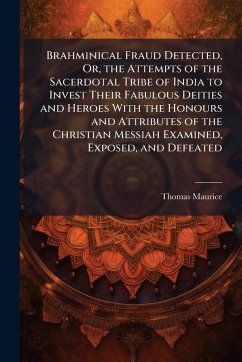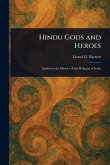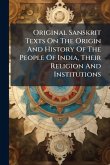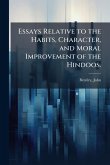In "Brahminical Fraud Detected," Thomas Maurice undertakes a critical examination of the Hindu religious tradition. Published in 1812, this work explores the alleged attempts by the Brahmin priestly class of India to imbue their deities and heroes with attributes mirroring those of the Christian Messiah. Through a series of letters, Maurice scrutinizes the theological and historical claims, aiming to expose what he perceives as fraudulent efforts to equate Hindu figures with Christian ideals. This book offers a fascinating, albeit biased, glimpse into early 19th-century perspectives on comparative religion and the interactions between Christianity and Hinduism. It is a valuable resource for understanding the historical context of religious discourse and the challenges of cross-cultural interpretation. "Brahminical Fraud Detected" remains a significant text for those interested in the history of religion, Indology, and the dynamics of religious comparison. This work has been selected by scholars as being culturally important, and is part of the knowledge base of civilization as we know it. This work was reproduced from the original artifact, and remains as true to the original work as possible. Therefore, you will see the original copyright references, library stamps (as most of these works have been housed in our most important libraries around the world), and other notations in the work. This work is in the public domain in the United States of America, and possibly other nations. Within the United States, you may freely copy and distribute this work, as no entity (individual or corporate) has a copyright on the body of the work. As a reproduction of a historical artifact, this work may contain missing or blurred pages, poor pictures, errant marks, etc. Scholars believe, and we concur, that this work is important enough to be preserved, reproduced, and made generally available to the public. We appreciate your support of the preservation process, and thank you for being an important part of keeping this knowledge alive and relevant.
Bitte wählen Sie Ihr Anliegen aus.
Rechnungen
Retourenschein anfordern
Bestellstatus
Storno








